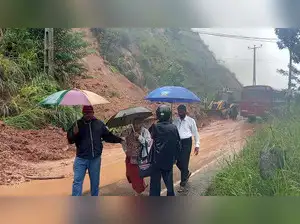According to BBC Report– In 2024, the dispute between Israel and its local rivals has markedly surged, aligning the IDF against both Hezbollah in Lebanon and Hamas in Gaza. The escalation has created significant challenges that reflect not only within Israel’s military sphere but also among its civilians living in the crossfire.
The Hezbollah Rocket Barrage
An estimated 190 rockets were launched at Israeli territory from southern Lebanon by militant Lebanese-based Hezbollah on October 10, 2024. The attack is among the heaviest targeted at Israel in recent months. The projectiles targeted different areas across Israel’s northern regions, sizzling off air raid sirens, and sending the civilian population scurrying for cover. At the Iron Dome missile defense system shot down several, and several others caused infrastructural damage. Fortunately, there were no substantial statements of civilian casualties in this recent wave of strikes.
The actions of Hezbollah reflect the increasing tensions along Israel’s northern border. In the face of these hostile moves, retaliatory strikes were made by Israel’s air force and artillery units, which aimed at curbing Hezbollah’s military powers. These incidents are a reflection of the continued efforts of Hezbollah to reject the sovereignty of Israel amidst the volatile ambiance in the area.
Drone incursion from Lebanon
Paralleling this rocket fire, the Israeli defense mechanisms intercepted a drone continuing from Lebanese airspace. The incident came hours after alerts in Kiryat Shmona and Margaliot, both along the border with Lebanon. This incursion underlines the versatile threat from Hezbollah, entailing not just missile attacks but also surreptitious or armed drone intrusions.
The IAF’s interception of the drone served as a rude awakening to the technological capabilities that non-state actors have acquired in the region, which are posing entirely new challenges for Israeli defense forces.
IDF strikes and ground operations in Gaza
While competing against Hezbollah in the north, Israel is equally busy in the south-actually working against Hamas in the Gaza Strip. In an effort to degrade parts of the terrorist infrastructure, the IDF has conducted a spate of precision strikes on Hamas targets. One attack included a strike on a training ground used by Hamas in Rafah, in southern Gaza, which the IDF described as a sensible strike against the operational capability of the militant group. In addition to the airstrikes, IDF contingents neutralized, with the intelligence agencies, 12 terrorists in the Jabalya area of Gaza. These were thought to have masterminded and carried out attacks against civilians in Israel. The strikes were part of a broader campaign to neutralize threats from Islamist militants in Gaza, where Hamas has continued to fire rockets and operate military infrastructure despite an Israeli campaign that aimed at weakening its grip on the territory.
Civilian Casualties and New Safety Measures in Northern Israel
The hard repercussions of escalating hostilities in Israel are felt within civilian life, mainly in its northern areas bordering Lebanon.
Raining rockets and rising cross-border threats led Israel’s Home Front Command to set new rules for civilian conduct in Galilee and Golan Heights. Authorities advise residents to stay close to shelters and follow their instructions in case of further attacks.
This permanent state of preparedness disrupted civic life significantly, as schools periodically closed their doors and limited public gatherings. The psychological burden on the civilians was extreme. Many of them were the same people who had lived through wars before. The Israeli government is providing support services to help citizens cope with the stress of living under constant attack threats.
The Broader Context of the Israel-Hezbollah-Hamas Conflict
The ongoing war is part of a long-standing struggle for control of the region. For almost thirty years, Hezbollah, a militant group supported by Iran, has been opposing Israel. While the world focuses on Hamas and Gaza, Lebanon has strengthened due to Hezbollah’s growing influence along its border with Israel. Reports indicate that Hezbollah possesses tens of thousands of rockets and advanced missiles, posing a serious threat to Israel.
Gaza is another important area of conflict. Hamas governs the area, and Israel along with most Western countries designates it as a terrorist organization. Hamas often fights against Israeli forces. Both Hezbollah and Hamas focus on destabilizing Israel, which makes the situation in the region very tense.
U.S. and International Response
As things get worse, the world is paying close attention to what’s happening. The United States, a strong ally of Israel, has supported its right to defend against attacks from Hezbollah and Hamas. After rocket attacks, the U.S. evacuated Americans from unsafe areas in Lebanon, showing concern about the growing regional danger.
Efforts to calm things down through diplomacy have been difficult. Both Hezbollah and Hamas have shown little interest in ending the conflict, while Israel remains committed to defending its territory. Although the UN and various global organizations are pushing for peace talks and calm, resolving the conflict remains challenging.
Conclusion
The recent clashes between Israel and Hezbollah, along with the ongoing conflict with Hamas in Gaza, emphasize the fragile nature of peace in the region. With growing hostility from both the north and south borders, peace seems uncertain, and the situation could get worse. The coming weeks are crucial to determine if the violence escalates or if diplomacy can achieve a temporary peace. People in Israel and nearby areas stay on high alert, dealing with the challenges of living in a conflict zone.






